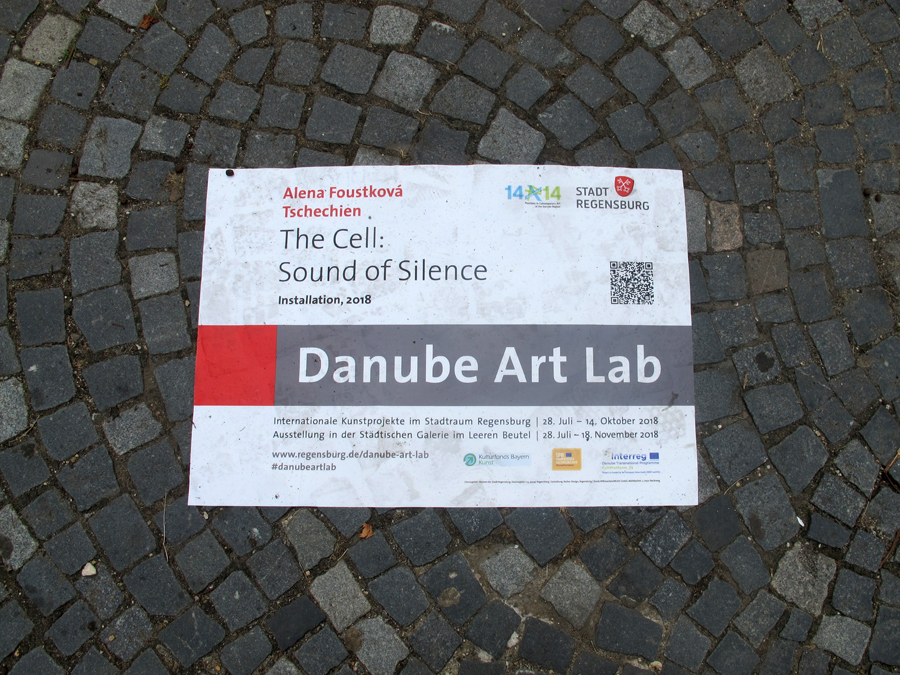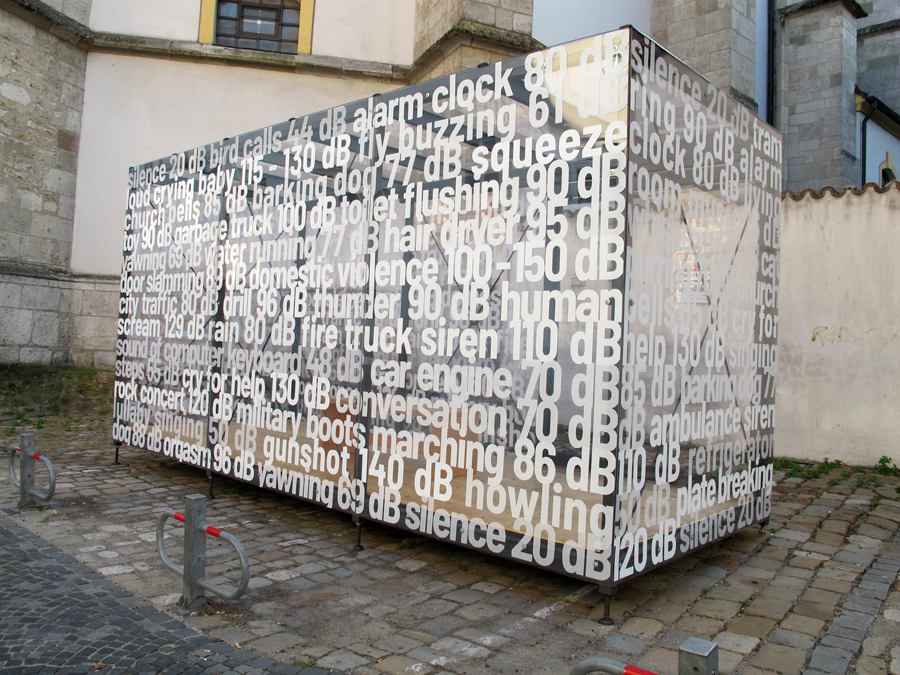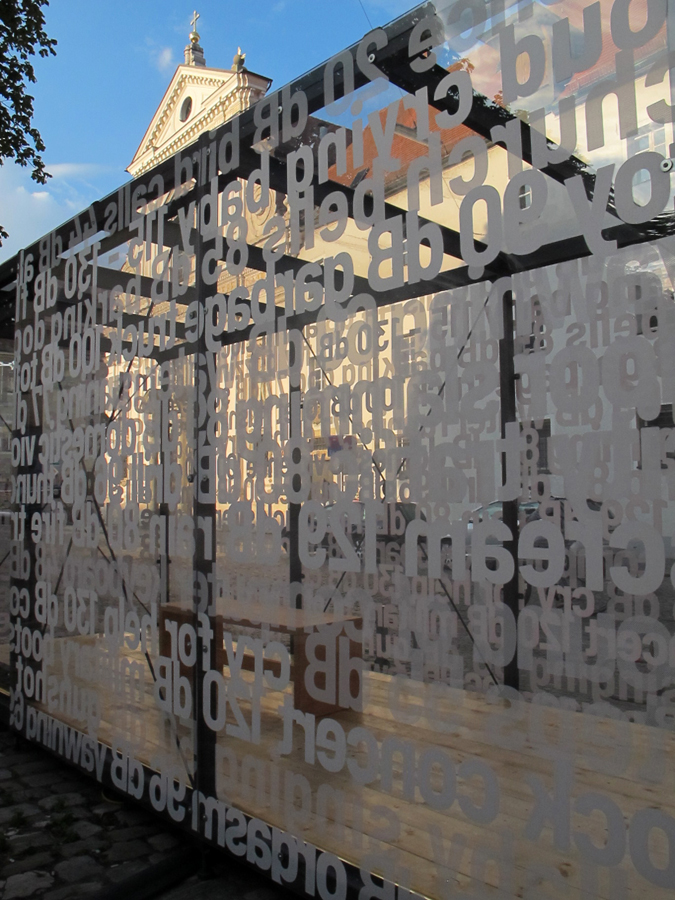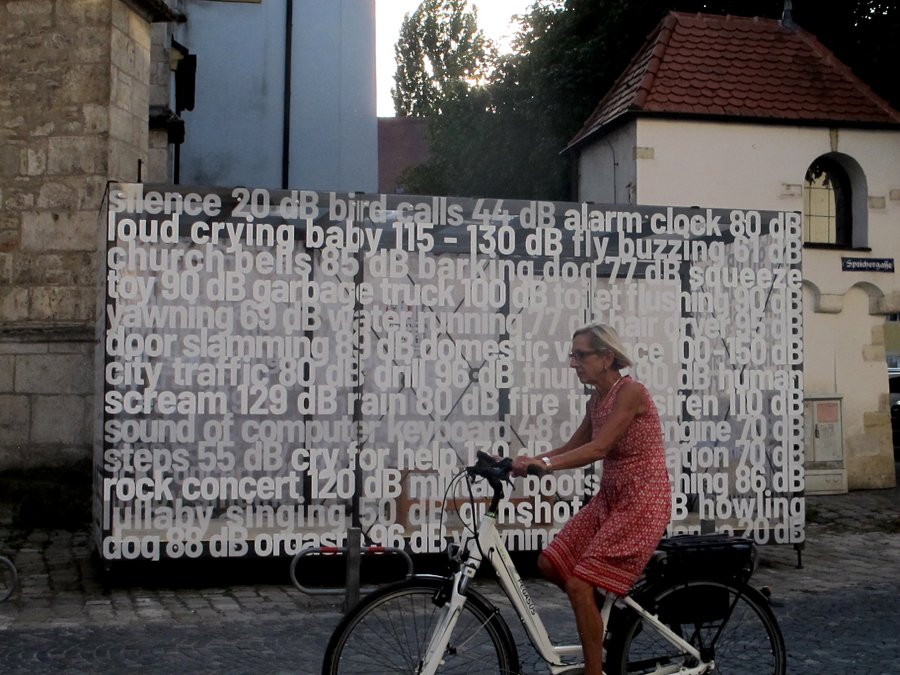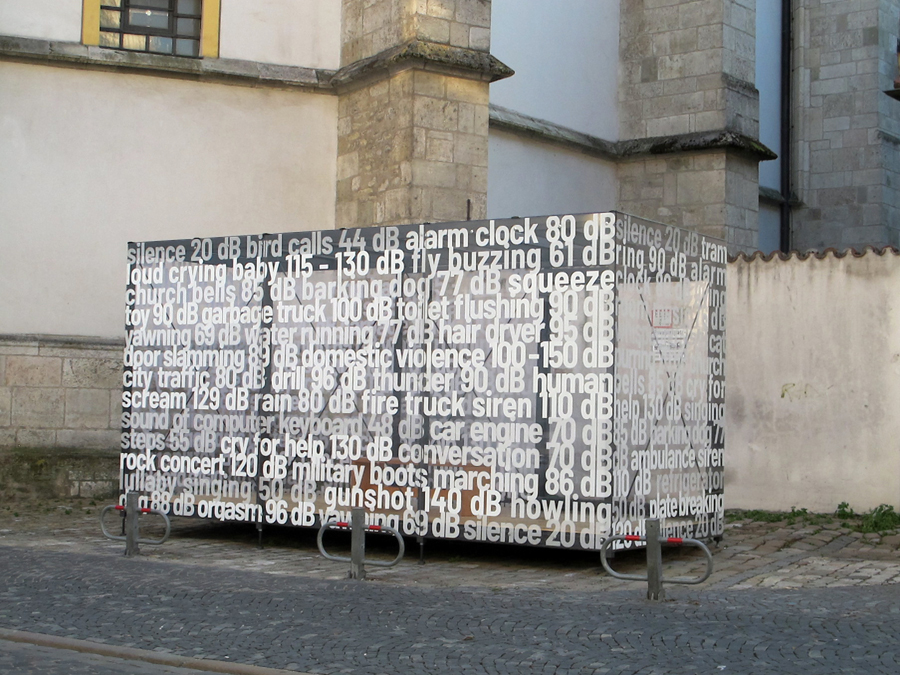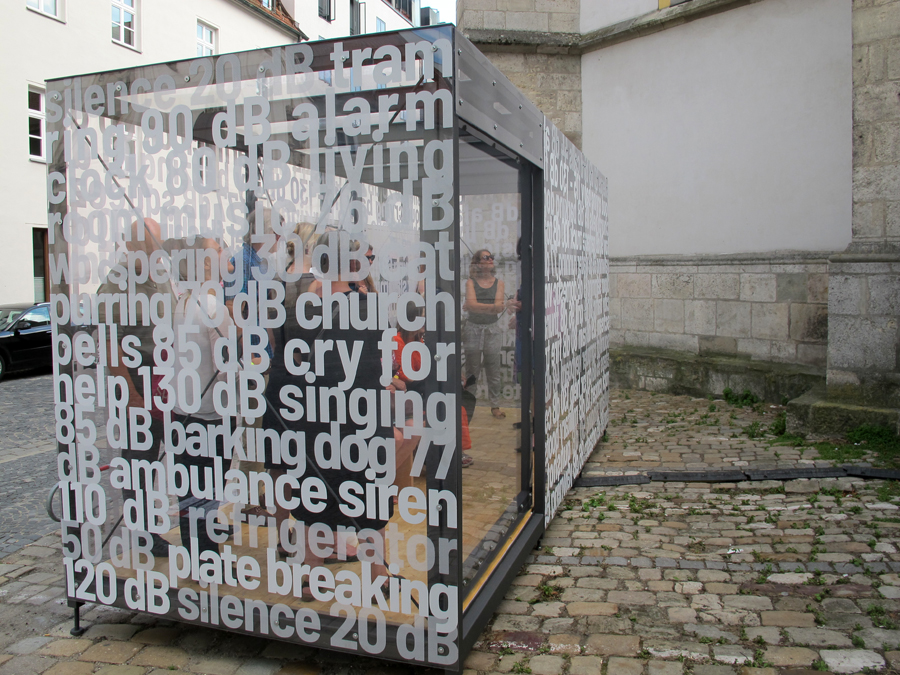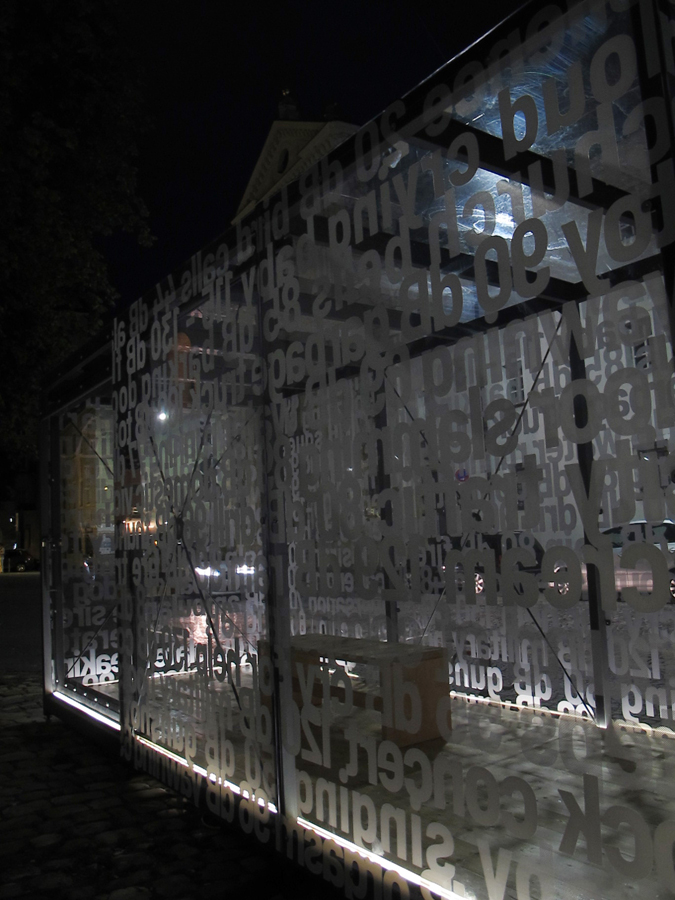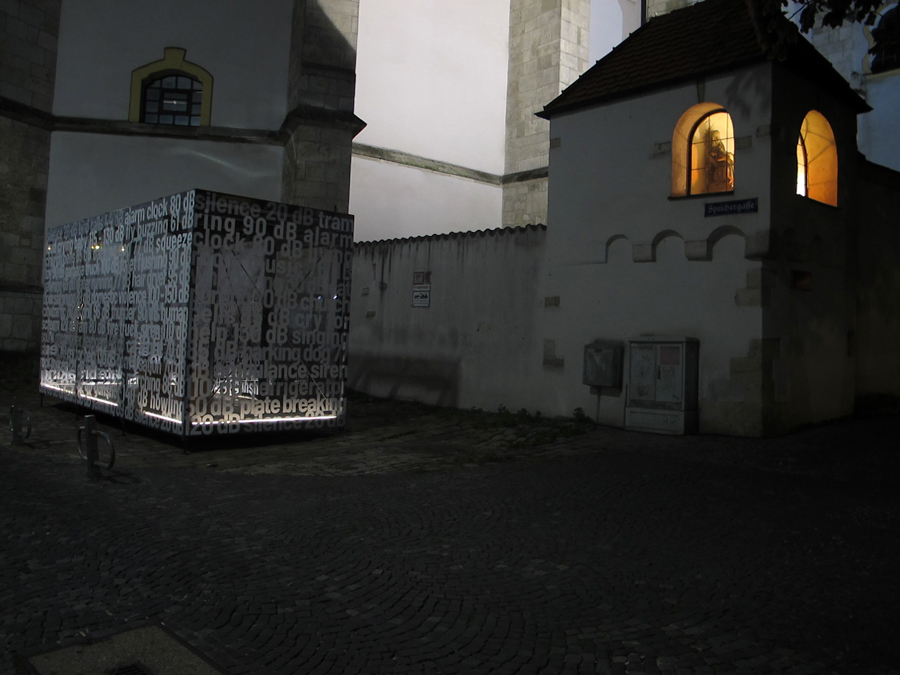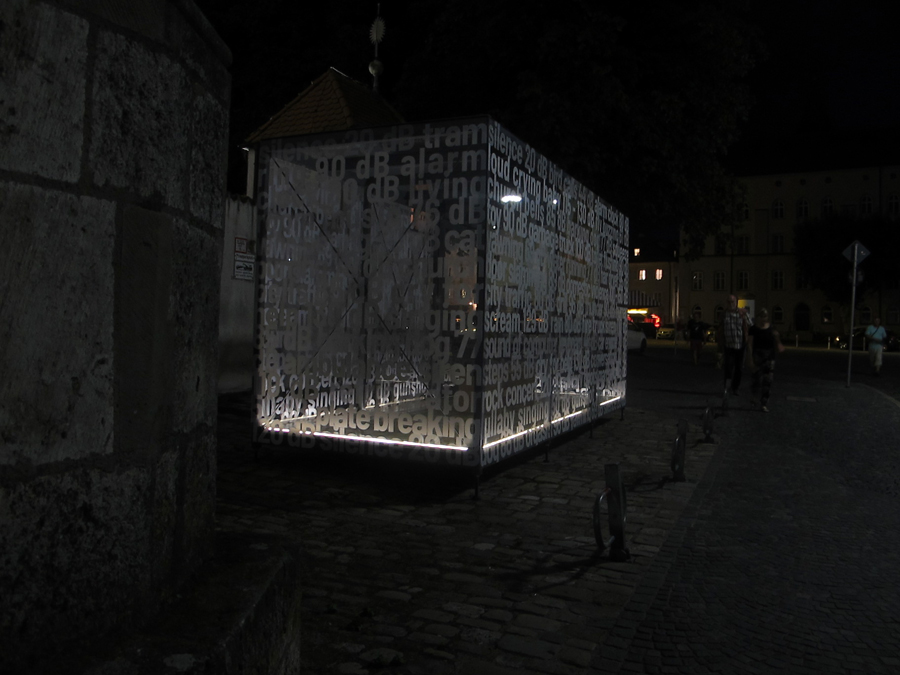Danube Art Lab, Regensburg: The Cell: The sound of silence
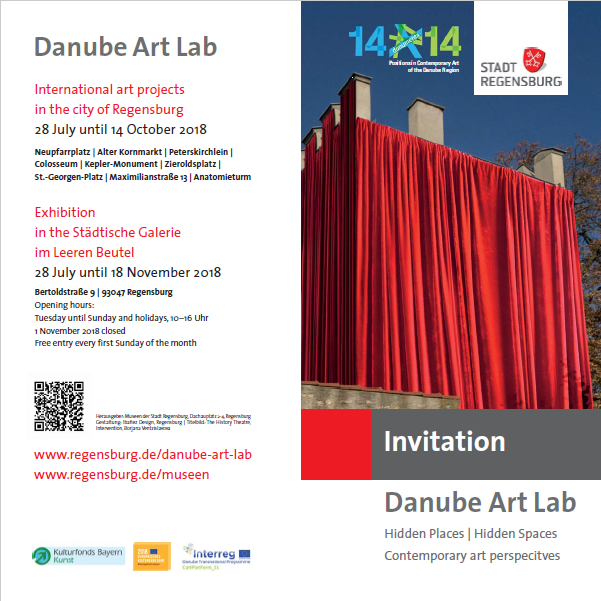
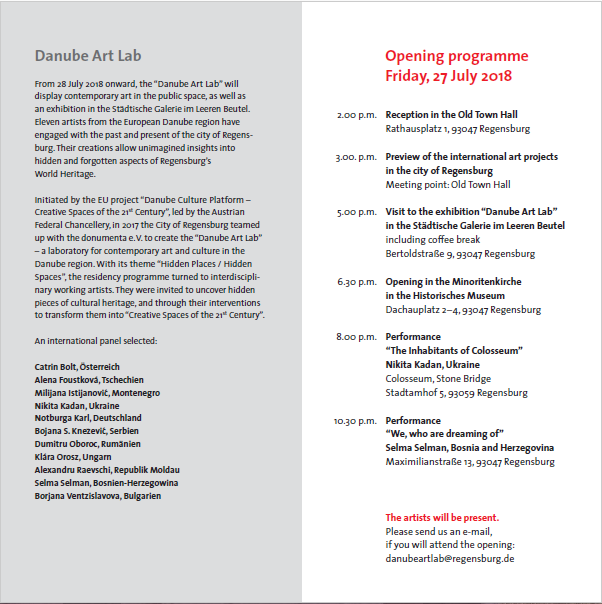
Alena Foustkova
“The Cell: The sound of silence", 2018, intervention in the public space, Regensburg, Germany
There are many monasteries in Regensburg. What they all have in common is that people from the outside cannot see the life inside. We cannot look over the walls of the monasteries and see what it’s like to live in a seclusion. These places are truly hidden to us. I decided to explore the possibility to experience the silence of the “cells” in which nuns and monks spend most of their lives. Most of the religious orders will observe some rules of silence. The location in Regensburg, which I have found as very suitable to place my artistic intervention to, is the Paulaner cloister of St. Cecilia Mater Dolorosa. Their strict rules mean, e.g. a ban of any visits in the cells. Another rule is that monks do not talk much among themselves, some areas of the monastery have a complete silence (silentium).
I would develop a three-dimensional space of a transparent, glass room where silence could be experienced, and which would be open and free to enter for anybody. It would be completely covered on the outside by written words of a wide variety of sounds in decibels. There would be various sounds to read, from the typical daily sounds to some very disturbing sounds of an ambulance or a human scream in distress. Sounds and the levels in decibels will be recorded by the author over a certain period with a mobile application. Inside, there would be only one simple, wooden bench to sit on and reflect our own ability / or disability to block off the noise around us, or to just take a rest from a demanding day. There is, however, an ambiguity which could also be experienced. Is the life behind the monastery walls protected from the outside world or hiding from it?
The “sound of silence” is a very wise expression put forward by Julie Kerr (2009: 82) to describe the sounds and noise religious men and women heard in the cloisters of silence, such as the sound of bells ringing throughout the day, the music emanated from the church, the sounds of birds and small mammals, the running water, and the noise made by the monks going about their daily chores – all of these intermingled with the noise of workmen carrying out work and repairs.
In this sense, and although sounds were heard in the cloister (monastery), the cloister of silence was perceived as the necessary scenery to engage in meditation and contemplation, essential steps in the path towards salvation.
What is a monk’s / nun’s cell?
A cell is a word for a monk's room. It is called a “cell” because it is a very special room: the place where a monk meets and has an intimate conversation with God in prayer. Typically, a monk's cell is used for nothing but a prayer, spiritual reading, and sleeping.
Because there are various dimensions of cells, I have used measurements for my Cell which were calculated by
Le Corbusier. According to him, an ideal cell for a disciple would have these dimensions:
Height: 226 cm / Width: 183 cm / Length - variable: 510 cm (my length)
The Modulor was a system of proportion, of Le Corbusier's design, based on human measurements, the double unit, the Fibonacci numbers, and the golden ratio.
Each cell is configured as a microcosm of a hermitage, designed for the individual to consecrate to study and pray away from the community. Despite the minimal spatial volume (13,37 m² for friar cells, 10,83 m² for disciple cells) the room is designed to provide for all essential daily functions: washing/sleeping/studying.
The dimensions of the friar room: 5,92m x 2,26m x2,26m.
The Modulor is an anthropometric scale of proportions developed by Le Corbusier in the tradition of Vitruvius, Leonardo da Vinci and others using the proportions of the human body to create a harmonic appearance of architecture.
